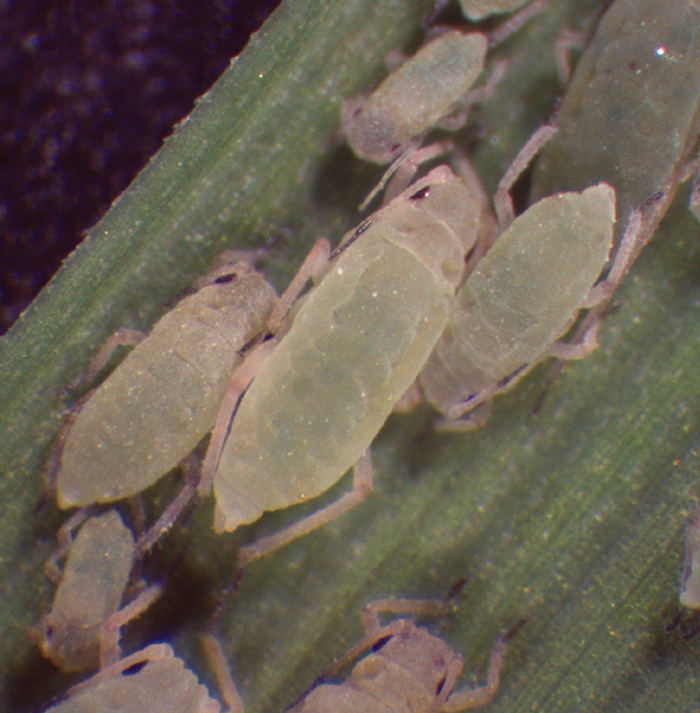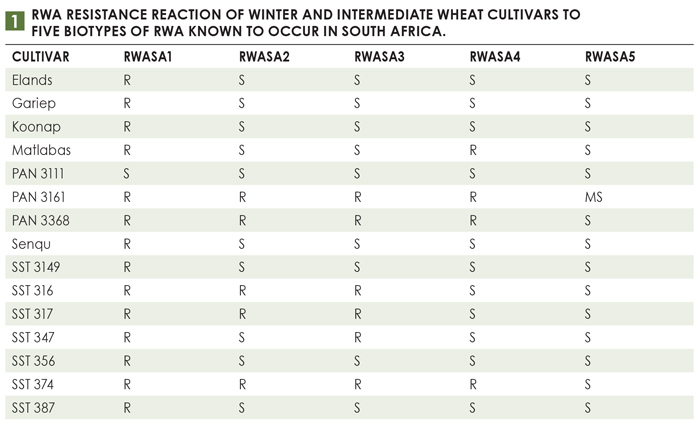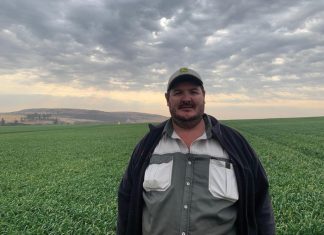
ARC-Small Grain,
Bethlehem
Russian wheat aphid (RWA) has been attacking winter wheat planted in the central interior production region in South Africa since 1978. The severity of infestations and the accompanying yield loss have fluctuated over time. The past few seasons have been relatively pest free. Why is this the case?
One could argue that in the years that have passed since this pest first invaded South African wheat fields, producers have learnt how to control it successfully. To a large extent this is true. The integrated pest control programme developed to manage RWA during the nineties contained various components, a few of which are still in place. The economic threshold values for significant damage were established years ago and although producers do not spray proactively against RWA, it is a well-known and relatively easy-to-apply control option.

Control measures
With GPS guidance systems now available, aerial application is more accurate and allows for later spraying than was possible in the early days, when applying insecticides with tractor sprayers was more prevalent. Natural enemies of RWA, notably Aphidius hordei, have settled in South Africa and Lesotho. This small black, parasitic wasp of 1 mm to 2 mm that lays its eggs in a live aphid, quietly goes about its life – killing one adult wheat aphid to ingest enough protein for energy and nutrients to produce its eggs. It now occurs wherever RWA does. Because it is an obligate parasite with no other hosts, it is very effective at finding and parasitising RWA, even when the pest occurs at low densities. The most important of the control measures in the integrated programme is, however, wheat cultivars with genetic resistance to RWA. Since the release of TugelaDN in 1992, South African breeding companies have released in excess of 40 cultivars containing resistance to this pest aphid.
42 years since RWA was first noted in South Africa, four new biotypes/strains named successively RWASA2 (2005), RWASA3 (2009), RWASA4 (2011) and RWASA5 (2016) now occur together with the original biotype RWASA1. Annually all cultivars included in the National Cultivar Evaluation Programme’s winter and intermediate trials are screened for RWA resistance. For the past decade or so, field data was collected from various sites and seedlings were screened in the glasshouse to obtain the reaction of each cultivar to each of the biotypes. During 2018, a strategic decision was made by the Winter Cereal Trust (who has been funding RWA research for many years) to focus on other wheat research aspects which currently have a higher priority. The annual evaluation is now limited to only the three-week glasshouse evaluation of RWA resistance in the seedling stage of these cultivars. Data which will appear in the 2020 season’s production guidelines for small grains in the summer rainfall region, are presented in Table 1.

R – Resistant
S – Susceptible
MS – Moderately susceptible
Producers should also be aware that aphids are mobile and biotypes may spread from the areas they occupied at the time the survey was done. Producers are thus recommended to regularly scout their fields for the presence of RWA and other pests. Should damage symptoms occur on a cultivar reported to contain resistance, it could be due to a biotype that is not controlled by that specific cultivar and insecticide application may be warranted if the economic threshold value is reached.

Survival technique
These aphids survive from one wheat season to the next on alternate grass hosts and volunteer wheat, barley or oats. Unlike many other aphid species, they do not have a lifecycle where eggs are laid to survive the non-crop season. In fact, there is no sexual life phase at all. All RWA in South Africa are female and give birth to live clones of themselves, which is why a new biotype spreads quite rapidly. The reason for the shorter time between the appearance of biotypes and the lower levels of RWA in the area have not been researched yet. It may possibly be due to changes in the area planted to wheat, which has declined dramatically recently and the influence of climate change which is noticeably present in this area. These theories would, however, have to be thoroughly researched before definitive answers could be given.




















